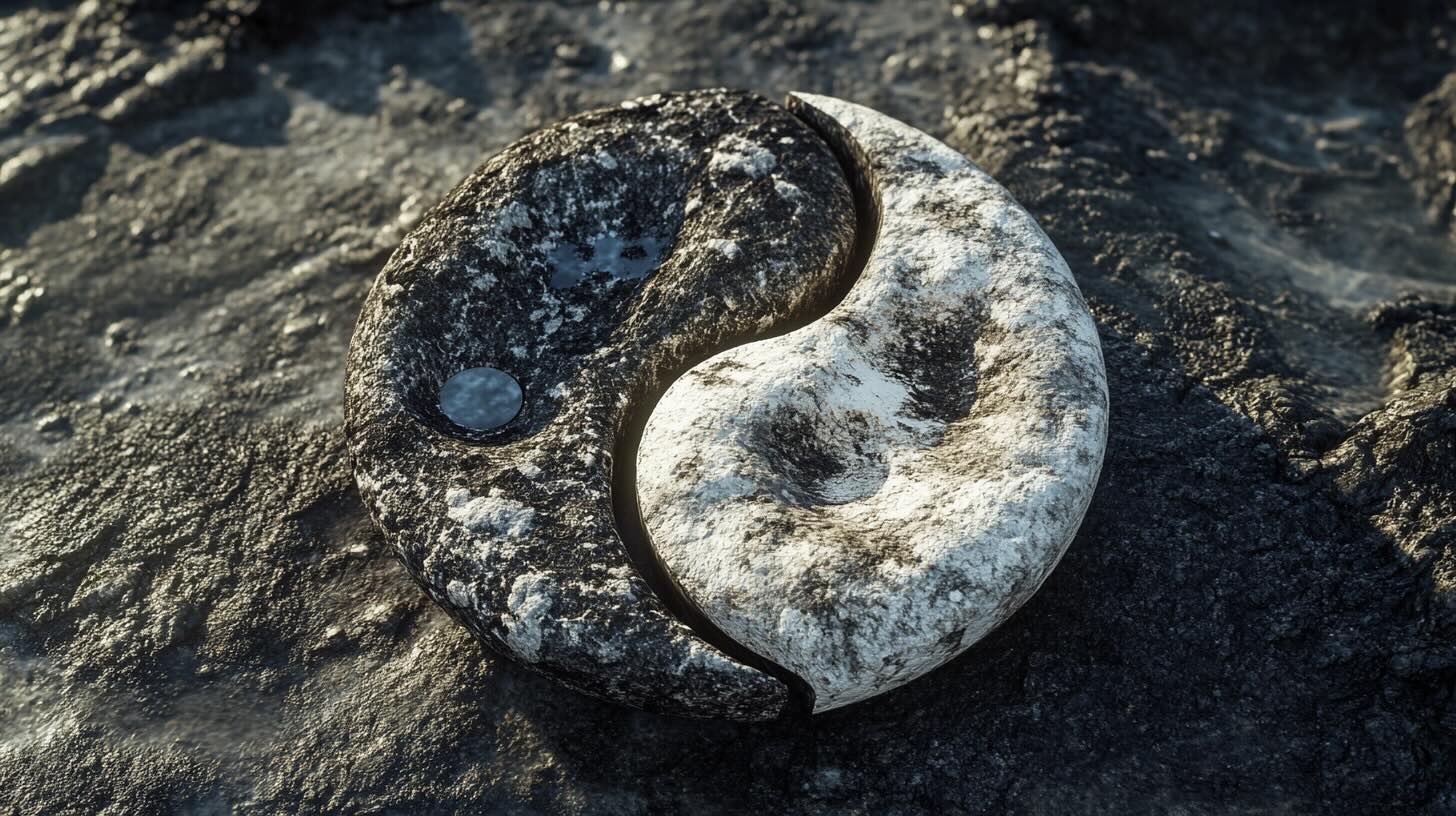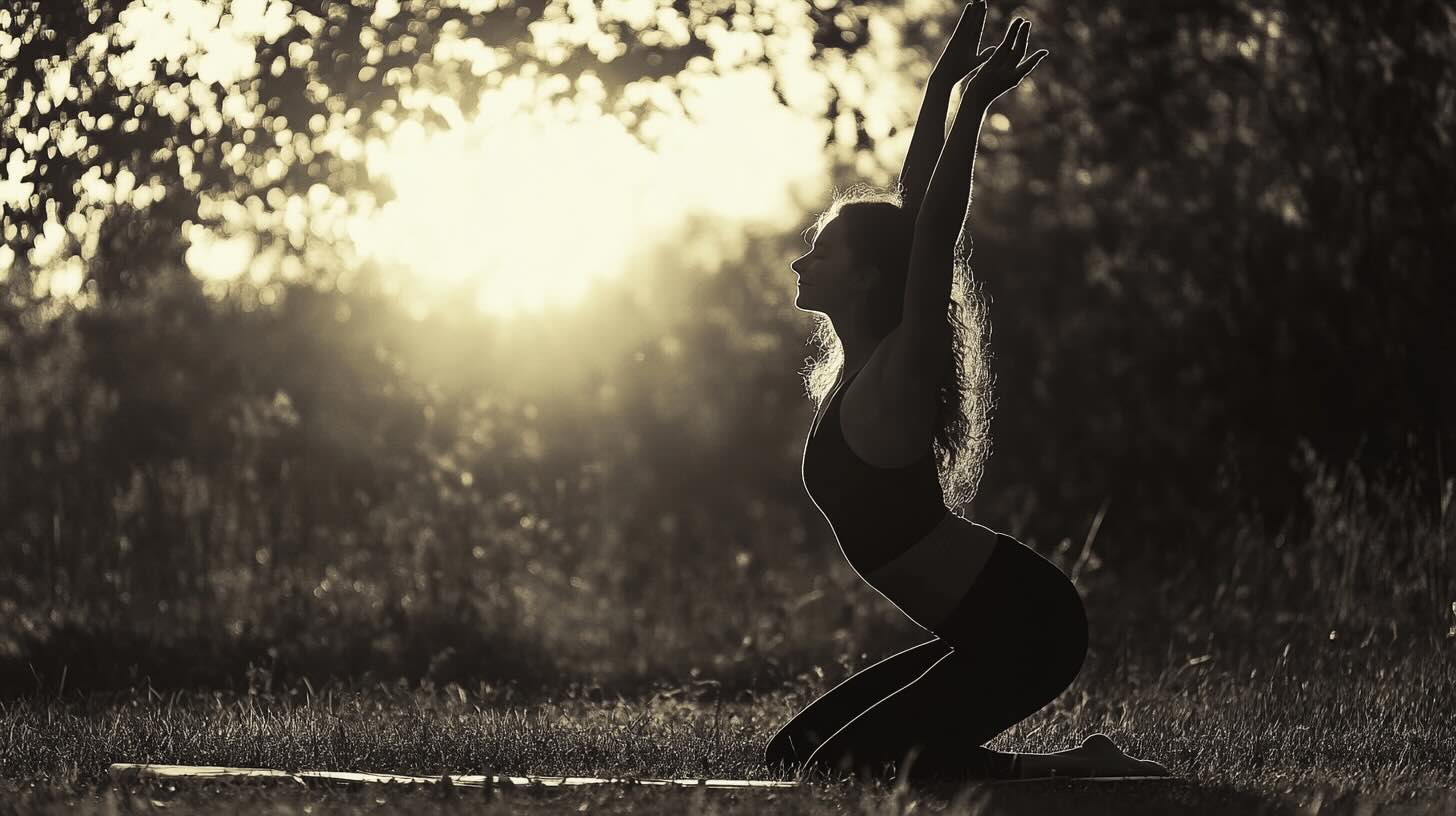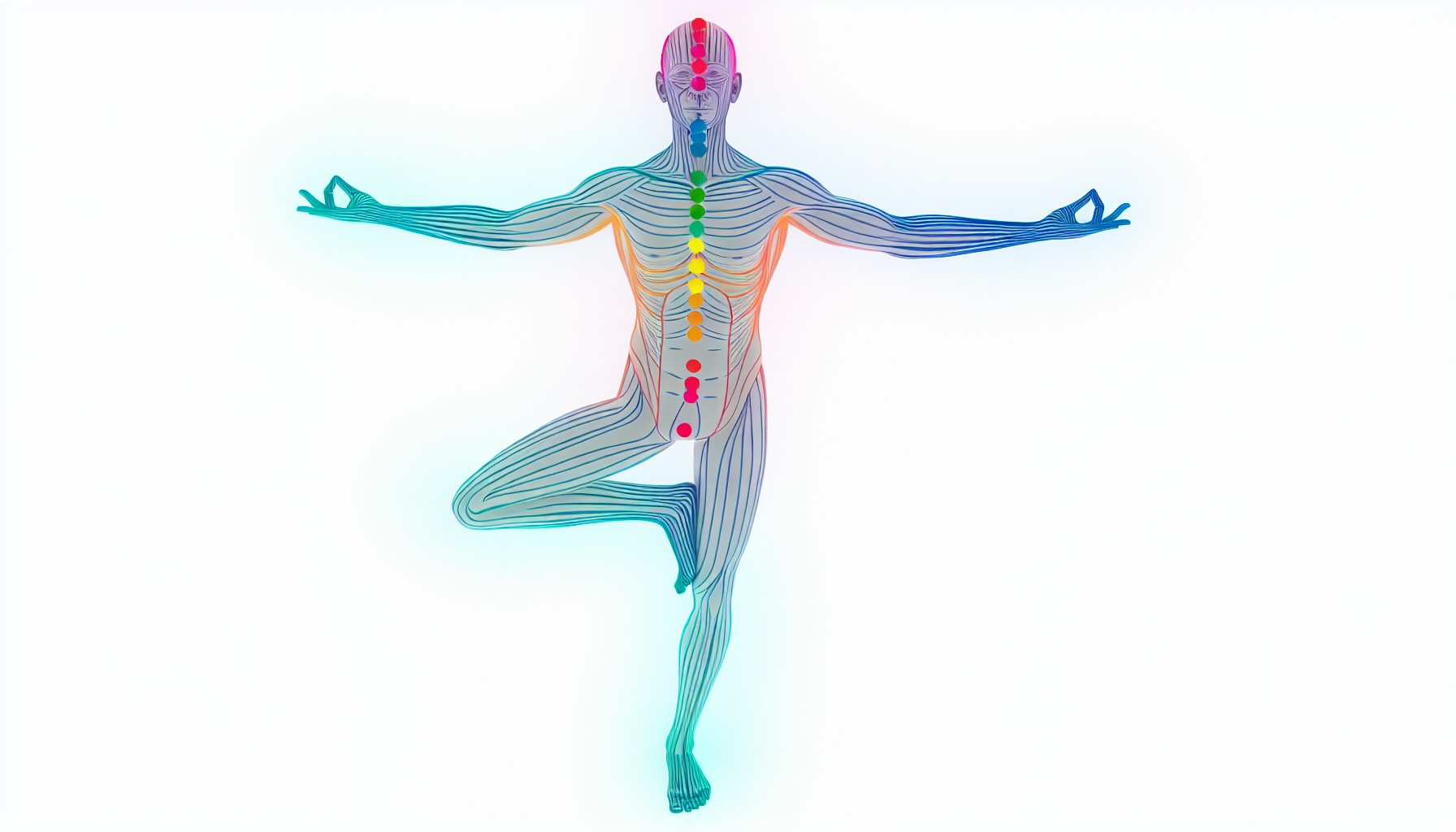February 24
Yin Yoga For Beginners: How to Relax 100%
0 comments
Welcome to the calming world of Yin Yoga, where stillness and mindfulness take center stage.
Are you looking for a way to relax and get to know yourself better?
Then this gentle yoga style is just right for you. Yin yoga offers a refreshing escape from the chaos of life and challenges us to find calm and come into balance. Let's dive in by exploring the essentials: the understanding of Yin and Yang, the equipment needed, some beginner exercises, breathing techniques and the connection between Yin Yoga and Traditional Chinese Medicine.
Before you roll out your mat and start meditating, you should understand yin and yang. In traditional Chinese philosophy and medicine, they represent opposing but complementary energies. Yang is active, dynamic and masculine - like the sun, summer, exertion or vigorous yoga styles such as vinyasa. Yin is passive, calming, feminine - like the moon, winter and tranquillity.
Yin yoga is in line with these principles and balances our yang-driven lives. It goes beyond the surface and allows practitioners to relax deeply while addressing connective tissues such as ligaments, fascia and joints. This practice creates a calm space to balance the force of daily life, just as the gentle light of the moon complements the vibrancy of the sun. It encourages us to pause, breathe, reflect and heal.

You don't need many things to start with Yin Yoga. The simplicity of what you need mimics the simplicity of the practice:
With these essentials, you are ready to dive into the calming waters of Yin Yoga. Focus on the depth of stillness and not on powerful movements.
Try our Yin Yoga!
Join us for an hour in `Zürich Wiedikon 🙂
Are you ready for your Yin Yoga journey? Try these four beginner-friendly exercises. They introduce you to the meditative quality of Yin Yoga and target the areas of tension:
These asanas minimize effort, help you connect to deeper states and bring you more than just flexibility. In total there are 36 Yin Yoga exercises without variations that you can discover.

In Yin Yoga, the breath bridges the mental and physical state and promotes calm and concentration. Conscious breathing brings mindfulness and calm to every posture. Improve your practice with breath work:
Meditative breathingSit or lie down comfortably with your eyes closed. Breathe in deeply through your nose and fill your belly, then breathe out slowly and release the tension. Extend the inhalation and exhalation to reach a meditative state.
Hold each pose with deep, rhythmic breathing. This helps the parasympathetic nervous system to relax and become mentally clear.

Getting started with Yin Yoga brings relaxation and insight. Here are the most important guidelines for a safe practice:
These elements enrich your practice and flexibility, both mentally and physically.
Yin yoga was developed in the 1980s and can be wonderfully combined with Traditional Chinese Medicine (TCM), which focuses on balancing energy pathways, known as meridians. TCM teaches that meridians guide the Qi or life force, which is important for health.
Each pose targets the meridians and promotes the flow of energy:

The gentle asanas of Yin Yoga reflect the acupuncture or acupressure of TCM and promote the harmonious flow of energy. Yin yoga is suitable for all age groups and Fitness level and regular practice increases flexibility and can release emotional blockages.
Integrating these exercises into your everyday life will have a huge impact on your well-being. Yin yoga combines with the principles of TCM to keep body and mind in balance.
With Yin Yoga, you can go into yourself and relax and create a balance to your hectic everyday life. Whether you practise in Zurich or at home, you can surrender to serenity and depth. It's more than just stretching - it's a journey into the heart that focuses on peace and vitality, Mindfulness and relaxation. Let it be a sacred time of self-care and self-discovery that leads to serenity and rejuvenation.
tags